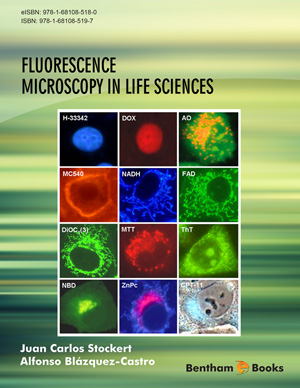Abstract
On account of the effects on cell processes, binding of small ligands with nucleic acids (NAs) has important implications in biomedical sciences [1-4]. Several fluorescent ligands allow visualizing the microscopical site of interaction. Specific DNA sequences may also be visualized by intercalating and minor groove-binding drugs. Detailed descriptions on NAs structure and function can be found in the literature [5-10]. Microscopical assays for DNA damage are described in Chapter 16.2. Detection of NAs by FISH is considered in Chapter 17 (see also Chapter 4.4). Consequences of binding modes of small ligands with NAs have been reviewed [11- 14]. Structure-based design strategies have yielded new DNA-binding agents with clinical promise (i.e. hairpin polyamides and bis-intercalators [1, 3, 15]. Recognition of DNA sequences by fluorescent oligopeptides is a new approach. Examples are dansyloligopeptides from the lac repressor (containing sequences 19-32 and 53-71) that bind specifically to the lac operator DNA [16]. Computer-assisted molecular docking is increasingly applied for the design of molecules to target therapeutically relevant NAs structures. New analytical methods (i.e. electrospray ionization mass spectrometry [17]) allow assessment of the binding affinity of ligands to NAs.
Keywords: Anthracyclines, Auramine O, Banding methods, Benzothiazoles, Berberine, Bis-benzimidazoles, Carbocyanines, Cationic porphyrins, Centromeric heterochromatin, Chromomycin A3, DAPI, Distamycin A, Feulgen reaction, Intercalation, Minor groove binding, kDNA, Schiff’s reagent, Telomeres.






















